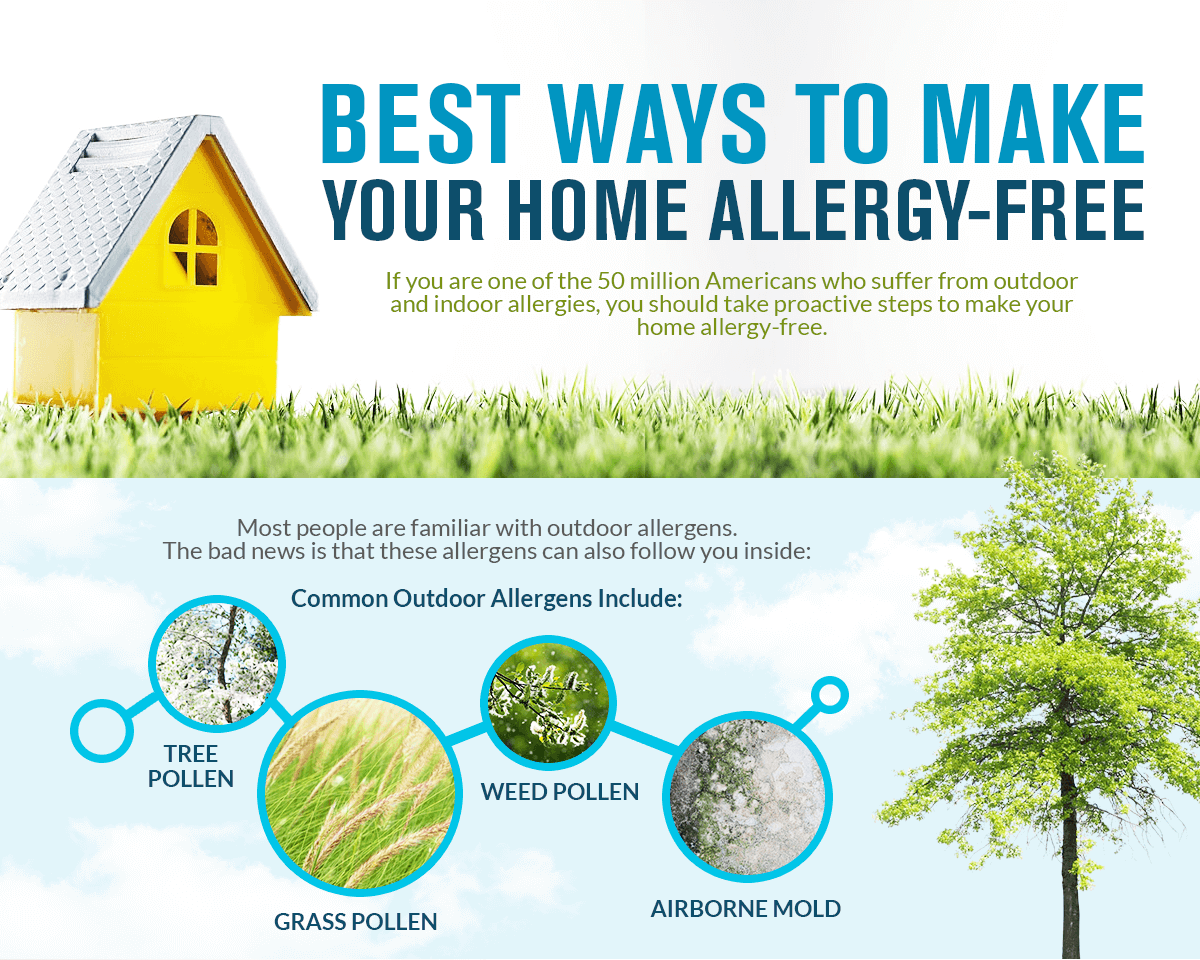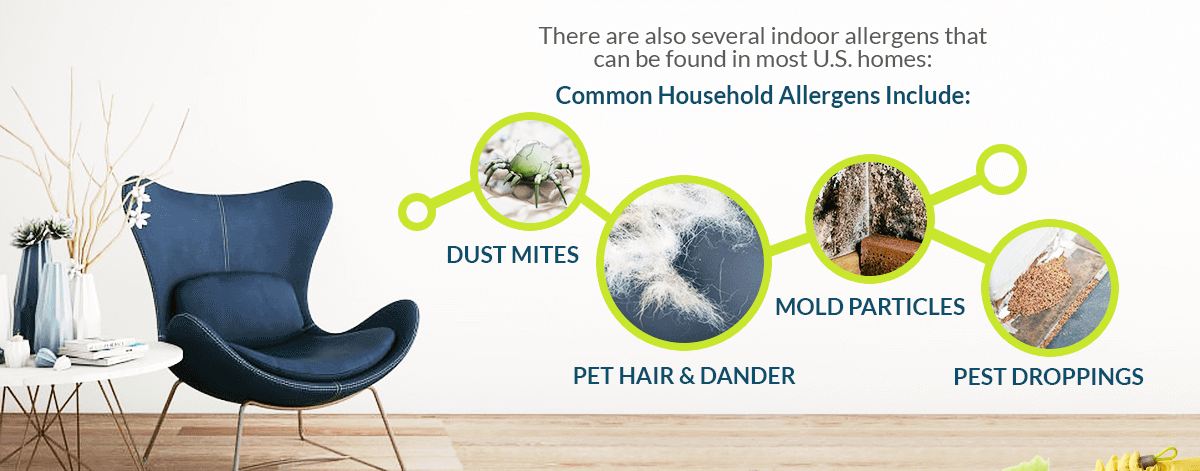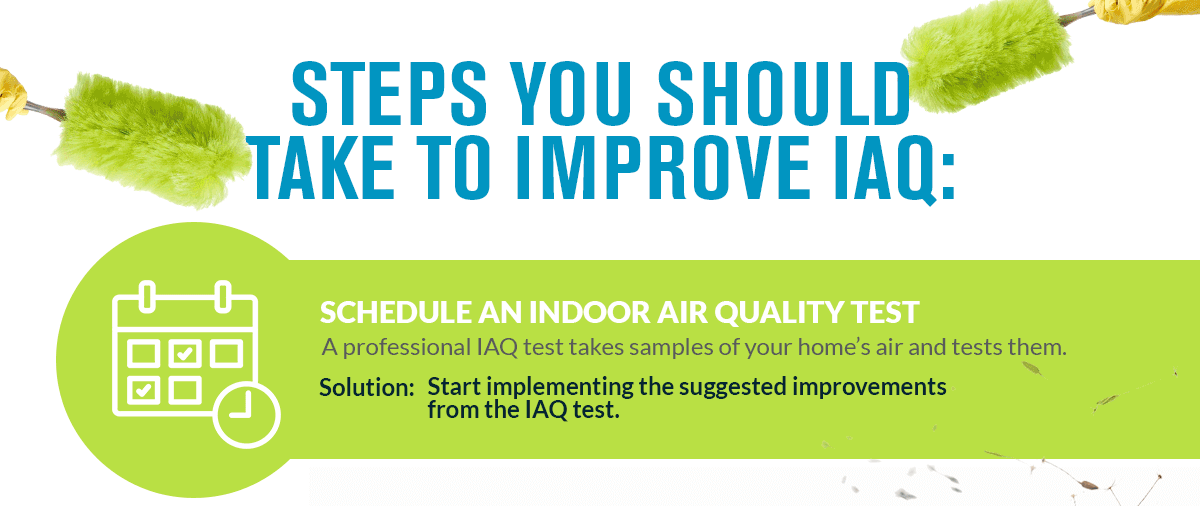As those who suffer from allergies know all too well, being outside during certain times of the year can be just miserable. Often, the only relief from seasonal allergies comes when people make their way inside. However, if your home’s indoor air quality is poor—as is the case for many American homes—the indoors might not be such a safe haven after all. While pollen, pet dander, and other common allergens are found in the indoor air of most U.S. homes, you can take steps to remove them. In this article, we’ll review the best ways to clear the air and make your allergy season a whole lot more pleasant.
Find out what’s in your home’s air
If you want to improve your home’s air, you need to start by knowing what’s in it and where potential problem areas are. That’s where our indoor air quality sensor comes in. Using sophisticated sensors, uHoo tests your home’s air for:
- Temperature
- Humidity
- Carbon Dioxide
- Airborne Chemicals
- Particulate Matter
- Nitrogen Dioxide
- Carbon Monoxide
- Ozone
- Air Pressure
- Allergens
It then sends the air quality results—good, bad, or somewhere in-between—straight to your smartphone. uHoo takes all the guesswork out of indoor air quality testing, and can alert you to potentially hazardous situations, such as a buildup of carbon monoxide gas.
Once you have a clear understanding of what’s in the air inside your home, you can then proactively work to lower the prevalence of indoor allergy triggers.
Clean your HVAC air filter
Your home’s air filter is the first line of defense against allergens and poor indoor air quality. Over time, pollen, dust, pet dander, and other contaminants that aggravate your allergies can become trapped in your ducts and filter. Every time you turn on the heater or air conditioner, those materials are getting recirculated into your home’s air supply.
In contrast, a clean air filter successfully traps and prevents allergens from getting into your home’s air. It’s not just pollen that’s a problem. We all love our pets, but floating cat and dog hair can be a serious allergy trigger for you and your guests. If you have pets living in your home, you should clean or replace your home’s air filter more often than the typically recommended four times per year. Those suffering from allergies should care for the air filter every month. This helps ensure that the filter is allowing for sufficient airflow without degrading your home’s indoor air quality.
Install an air filter
The most effective way to improve your home’s air is by installing a professional-grade air filter. Generally speaking, there are two distinct types of indoor air filters, and each performs slightly different functions:
- Filter-based air filters: Much like your home’s air filter, these plug-in air filters pull indoor air through a specialized, physical filter that captures particulate matter and allergens, removing them from your indoor air.
- UV light filters: These filters use ultraviolet light to kill bacteria, viruses, and other living matter. They do not capture particulate matter, however.
To build the best defense against allergens and indoor air contaminants, our recommendation is that you have an HVAC professional in your area install both types of filters in your home. Something worth considering, as well: uHoo connects to most IOT-enabled air filters, allowing it to automatically turn them on when it senses contaminants in the air. That means your home automatically gets clean, allergen-free air without you even having to think twice about it!
For even more ways to make your home allergy-free, check out this new infographic from the team at Southern Air Heating & Cooling & Plumbing in Louisiana:






